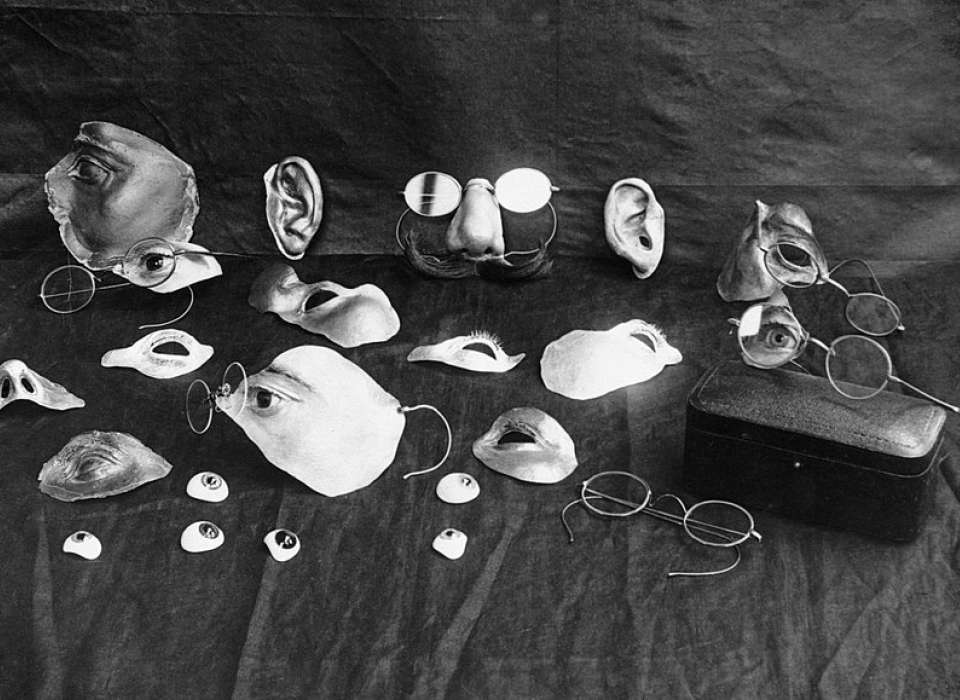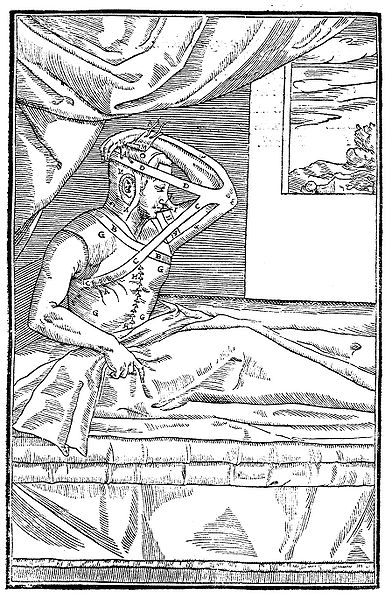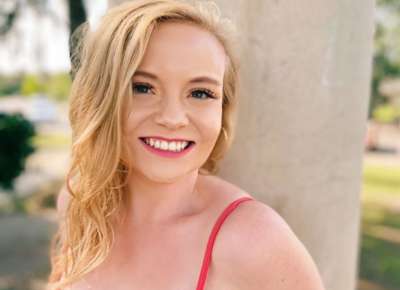Top image: The Development of Reconstructive Plastic Surgery during the First World War. By Horace Nicholls. Dated First World War. Courtesy of the Imperial War Museum Photograph Archive Collection. Accession Number: IWM Q 30460.
A WWI veteran stares into a mirror and notices a puzzled face staring back at him. He does not recognize the face. He turns to look behind him, and no one is there. He glances back at the mirror, and the face is still there. The veteran then touches the face’s reflection, and it does not move. There’s a massive hole on the left cheek, as if someone took a bite of an apple, and the jaw is completely eradicated. The veteran takes a step back and begins to caress his own face. He then realizes he is the face in the mirror.
During World War I, advanced artillery and chemical warfare caused mass trauma to WWI soldiers leaving many men with severe burns and damaged faces. Pioneer plastic surgeon Sir Harold Gillies developed many new plastic surgery techniques. While the plastic surgery field was far more advanced than years prior, many men struggled with their disfigurements and resorted to ending their own life.
Using previous methods developed by Sir Gillies, WWII surgeons and medical assistants created new treatments and procedures in plastic surgery that are still used in the modern practice. These techniques not only improved soldiers’ physical appearance, but also their morale, by restoring their sense of pride and confidence.
In February 1943, Valley Forge General Hospital opened their doors in Phoenixville, Pennsylvania, for the disfigured and wounded soldiers. Unlike other military hospitals, Valley Forge specialized in six distinct fields: eye surgery, rehabilitation of the blind, neuropsychiatry, maxillo-facial surgery (jaw reconstruction), histopathology (tissue diseases), and their most popular field, plastic surgery. Swarms of troops arrived from battle, with several missing jaws or disfigurements from bullets and burns. One such patient- Pvt A. C. Flowers, from New Orleans, LA, arrived from the invasion of North Africa where “he was strafed by a Nazi plane. The bullet entered the left side of his jaw, passed through and entered his right breast.” This serious injury required intense plastic surgery operations that resulted in a major success. After surgery, Pvt Flowers was eager to return to active duty. In order to encourage the public’s perception of plastic surgery, Valley Forge hospital released a statement in The Philadelphia Inquirer stating, “the public’s first duty is to become accustomed to having these men around and to accept them wholeheartedly as desirable human beings.”
The men and women behind Valley Forge hospital truly deserve recognition for the hospital’s success, as well as restoring the confidence of so many soldiers. Making this possible was the hospital’s plastic surgery unit: Dr. James Barrett Brown, Dr. Joseph Murray, Dr. Bradford Cannon, and artist/medical assistant Virginia McCall. As Director of Valley Forge, Dr. Brown specialized in split thickness skin graft, where a surgeon removed a thin layer of skin from the body and applied it to the surgical area covering the injury. Prior to Dr. Brown’s technique, surgeons would freehand an incision, which was actually small and thin, and was difficult in covering large areas.
Another feature of Dr. Brown’s technique came from the help of McCall. Her assistance was vital to the healing process. McCall created plaster masks of each patient’s progress through the different operations. Dr. Brown believed photography could not provide an adequate reference on the soldier’s injuries, which is why McCall’s talents were needed. Before a procedure, McCall draped the soldier’s face with wet plaster, allowing it to harden for a few minutes. She would then paint the mask to resemble the real-life soldier’s disfigurement. She also provided art sessions to men after operations, a practice now called “art therapy.” McCall has been regarded as a favorite among soldiers in the plastic surgery unit for her compassion and guidance. She recalls a memory where “a man stood in front of his own mask and said ‘I don’t see how I’m alive.’” The surgeons and her work not only gave soldiers the chance to face society but also aided in saving their life.
In addition to Dr. Brown’s split thickness skin graft, Dr. Murray played a major role in the plastic surgery field. During his time at Valley Forge, he tested and studied skin grafts on burn victims. A common problem was finding enough skin on the burn victims to perform a skin graft. Dr. Murray tested an unheard-of theory on a burned soldier who had 70 percent of his body severely burned. With the consent of the soldier’s parents, Dr. Murray used skin from a recently deceased soldier to graft the burn victim’s wounds. After a month, the soldier’s body rejected the skin. However, within that time frame, the skin graft served as a medical bridge allowing the soldier to become medically stable while he regenerated his own skin. The soldier went on to live a healthy and active life because of Dr. Murray. Later in his career, Dr. Murray performed the first successful kidney transplant and even received the Nobel Prize in medicine in 1990.
Dr. Cannon also specialized in burn victims and used a technique that is still used today. He wrapped petroleum-coated gauze containing boric acid around the victims’ burns in order to preserve the skin. In 1946, he received the Legion of Merit. The citation reads, “By his professional skill, sound judgment, and conscientious devotion to duty, he was instrumental in making it possible for young men who might otherwise have been maimed for life to return to useful and normal careers.”
Another common practice Dr. Cannon focused on was nose reconstruction by using the rhinoplasty method. This technique dates back to the 1500s from Italian surgeon Gaspare Tagliacozzi. The above image depicts the procedure where surgeons used shoulder tissue to graft the face. This technique would take several operations.
Without the innovations of Dr. Cannon, Dr. Murray, McCall, and Dr. Brown, who knows what would have become of these soldiers’ lives. The plastic surgery unit at Valley Forge hospital performed 15,000 operations without a single fatality during World War II.
Across the Atlantic in East Grinstead, England, another surgeon, Sir Archibald McIndoe, provided life-changing operations on men from the Royal Air Force, United States, Canada, Australia, New Zealand, France, Czechoslovakia, and Poland. McIndoe believed that the soldiers needed to heal mentally, emotionally, and physically. Treating severe burns and face disfigurement, McIndoe discovered a new method of treating burns without causing strenuous pain to soldiers by bathing the men in saline. This technique proved to be a gentler practice and increased survival rates. He also found that there was strength in numbers when mending the morale of soldiers. He established “The Guinea Pig Club” as a social group for his patients to bond from similar experiences and to make them feel more human. His patients did not wear traditional hospital attire; instead, they wore their military uniforms, which gave them confidence and a proud identity. McIndoe wanted to remind them that they were not victims in their own stories, but that they were heroes who fought for their country against fascist regimes. The members of the club would reunite every year until it dissolved in 2007. This was the one time a year where no one would ask about their injuries and, as best described by historian Emily Mayhew, it was “where every single person in the room understood completely what everyone felt at that time in their lives.”
The innovations from the medical professionals at Valley Forge hospital and the techniques of Sir McIndoe paved the way for the plastic surgery medical field as we know it today. These men and women aided in liberating the soldiers’ physical appearance and from facing the burdens of society, so that when the day came to return home, they could face the man in the mirror.
Sources:
- Dixon, Mark E. 2013. “Haverford History: Virginia McCall’s WWII Art Advanced the Field of Plastic Surgery at Valley Forge General Hospital.” Main Line Today. June 18, 2013. https://mainlinetoday.com/life-style/haverford-history-virginia-mccalls-wwii-art-advanced-the-field-of-plastic-surgery-at-valley-forge-general-hospital/.
- Fitzharris, Lindsey. The Facemaker: A Visionary Surgeon’s Battle to Mend the Disfigured Soldiers of World War I. New York: Farrar, Straus and Giroux, 2022.
- Lenger, John. “Murray: Surgeon with Soul,” Harvard Gazette, October 4, 2001, https://news.harvard.edu/gazette/story/2001/10/murray-surgeon-with-soul/.
- Mayhew, Emily. The Guinea Pig Club Archibald McIndoe and the RAF in World War II. Toronto: Dundurn Press, 2019.
- “Morale is High at Valley Forge General Hospital.” The Pittsburgh Courier. August 7, 1943.
- “We are Facing a Deceitful Test to our Patriotism.” The Philadelphia Inquirer. September 16, 1945.
Rebecca Poole
Rebecca Poole is a native of Southeast Louisiana. She graduated with her Master’s degree in Public History from the University of New Orleans in Spring 2020.
Cite this article:
MLA Citation:
APA Citation:
Chicago Style Citation:







![Max Fuchs, New York City cantor, sings as Rabbi Sydney [sic] Lefkowitz, Richmond, VA, conducts the first Jewish services from Germany.](/sites/default/files/styles/max_650x650/public/2025-10/image1.jpg)


